|
And then the day came when the risk to remain tight in a bud, was more painful than the risk to bloom. -Anais Nin We all face this turning point repeatedly: when resisting the flow of inner events suddenly feels more hurtful than leaping toward the unknown. Yet no one can tell us when to leap. There is no authority to bless our need to enter life but God within. -Mark Nepo The above quotes, from The Book of Awakening: Having the Life You Want by Being Present to the Life You Have, speaks to the many ways and times throughout our life time, when we have resisted the inner stirrings that lie within. It could be saying “Go North”, but that might take us too far from the comforts of famiiar people in our lives, it could say SouthWest, but then our employment and financial security is in the North East. It could even just say take 10 steps in that direction, just taste, dip a toe, but we may fear that we will like it more than the familiar life we have. We all have enormous worlds within. Just lay down for 10 minutes in the course of your day and notice where your mind goes. Do something that is centering, that brings you back to you, and feel the feelings - perhaps the aches and pains that need tending to, the rumbling in your stomach asking you to nourish it…..the tightness in your shoulders asking to go for that swim that always seems to stretch out the kinks. I know that life has at times, asked me to be outwardly focused, and then, softened or slowed down just enough to direct me inwardly. During these times, I tend to have paper and pen with me everywhere I am, or use my Notes App on my phone to document things like complaints, joys, inspiration, wisdom, humorous moments parts of my body needing attention…….whatever shows up, so that I can be present to the inner rumblings. I will share them with people in my life, and they will give me feedback or simply express what shows up for them in the context of sharing. In this way, I make alive what would otherwise be silent, missed, unnoticed, hidden behind the curtains of what is visible to others..and myself. I learn the art of honoring and respecting the “spirit”, the “soul” that lives deeply within, that can easily be ignored, misunderstood and forgotten, should I only give my attention to the tasks, responsibilities, and commitments that, to no end, call me outward. I also become much more in tune with and clear about who I am……for myself, others and the world at large. I hone the skill and develop the practice of valuing myself and my life. In sharing my inner stirrings with admired and respected friends, there are themes of feedback over a lifetime that confirm who I already know myself to be (and noteworthy, as a young woman who I wanted to be). I could share them with you here, but this email is more about you, and the life that is yours, a precious unfolding and blooming of who you are in the world.
Mark Nepo asks:
The key to this meditation is “safely”…..when you are exposing yourself in this visualization, everything and everyone is safe. They are kind, generous, understanding, charitable, forgiving and non-judgmental. They are waiting for you to open up your centre, because they already know that you are good and enough, and want to witness the sparkle that bursts forth. Like magic to a yummy 5 year old, icing on the already delicious cake, the bernaise sauce to a perfectly cooked steak. Here is to having a week of self-wonder, self-kindness and magic.
1 Comment
Hi there, Your brain is designed to anticipate the future in the worst possible way. It is not designed to wake up in the morning and say “you are amazing, you are beautiful, you are the best….” At least not without a lot of training and practice. And even then, we will have days where our brain does not want us to get out of bed. The brain is going to do what it’s going do, think what it’s gonna think, and I could just say “thank you brain for sharing” or “i hear you, but we are going to get up together and walk through our day........ feeling what it feels like to be amazing, beautiful and the best today”. You see, when we focus on on our “being” - who or how we are being in the course of a day, within a particular relationship, or in the world, we now have access to our happiness. Now this isn’t more of the old “law of attraction” approach…..it’s not like “not” taking action and just “being” kind, or generous, or excited will suddenly and miraculously produce what we are looking for. Sitting and meditating on being a millionaire is not going to get us millions without the practices to get there. Being patient, generous, present and joyful will not land us with our soul mate if we are not making ourselves available to the population we want to date. But…..if we are being “excited”, “curious”, appropriately “vulnerable” and “open” to the prospect of dating….then maybe that will propel us, with little effort and expended energy, to take the actions needed to be taken. 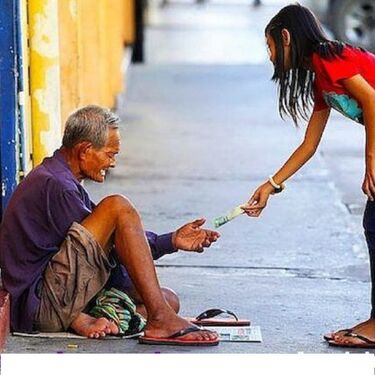 Being “inspired” by our emotional state is what gets us moving in the directions we wish to take. So…….if I'm being angry, hurt, cynical and skeptical about the dating world, the outcome will likely be an experience of dating .......that will confirm the beliefs (eg. there are no good women/men out there) that inform the way I am being (skeptical and careful). And here is the next part….our beliefs and being inform our behavior. How excited or exciting do you think the angry, hurt, cynical and skeptical person will be, when out looking to date? What kind of feel will they have to their body language, their facial expressions? So, really, all this to say that we have a brain. We have had this brain since the beginning of time…..the brain that is not designed toward dropping its' guard, and taking on the day without thinking about possible hazards, challenges, demands and potential threats to our safety and security. Have you ever heard the saying “Our brain is Teflon for the positive and Velcro for the negative”? It's just what it's designed to do….but we don’t have to give ALL OF US up to it. There are other parts. The parts that are moved and inspired by a good movie or video, parts that are or have been excited about your life, parts that are wise and know that there is something more or out there for you, parts that can laugh at life or to something funny……We do not have to give our power to this part of our brain and let it run with it. What would be possible if we stopped trying to change or fix that? Fix that part of ourselves? We’d certainly stop beating our heads against the wall…..cause that’s what we will be doing for the rest of our lives if we try to fix something that has been programmed to protect us from real threat. This is our survival instinct. But since most of us in the first world do not have to deal with issues of “survival”…….ahhhh….we can now relax enough to contemplate growth, thriving, becoming and living into our full potential……. But we have this part of our brain that has evolved and strengthened over thousands of years and has a voice like a TRAINED TENOR…..a voice that we have been trained to hear quite well…..and trained to give our energy. The tell-tale sign will be how and what your body does..... and how it feels at any given moment, after you give this voice the front row seat to your day.
What to do….. Well……the first step to transforming our way of being is to notice it. Create the intention to be aware of this pre-programmed strategy to anticipate the worst…..and listen to it like you would a good friend needing your attention over a cup of coffee, giving it space to be expressed, perhaps even contemplating the possibility that “this” worst could happen. After all…anything could. But then, you wouldn't likely indulge your friend and give her or him all the fine examples in the world, or in her life, to cement this belief. You might gently challenge him a little, providing other evidence, supporting the belief that life has been good to him at times. What works best is when you only challenge these beliefs after you’ve listened to them and given the voice space to speak. And limit its time…..say 10 minutes maximum when it comes to your own voice. If you are finding that this voice still wants to express more…..give it another short time limit AND NEGOTIATE some time to provide it with the hope, inspiration, examples of kindness, accomplishments….acknowledge efforts made in your life to meet challenges........ every day….. This is the practice of self compassion…..of acknowledging your humanity…..that THIS IS what it means to be human……that you ARE doing humanity….. And that there is nothing to fix. Just BE in it, navigating through it, developing muscle, learning more about yourself in the world, unfolding, developing, strengthening. All the best to your day and your week. May it be filled with love and wonder. Does Self compassion have a place in these times of high anxiety?  Absolutely…….. As you know in your everyday life, you will from time to time be hard on yourself. Or at the very least, forget to be REALLY GOOD to yourself. Its pretty natural, pretty normal……truth is, your next door neighbour, your boss, your cousin, sibling, and even your spiritual mentor will need to have practices in place to keep self-compassion at the forefront…and in effect, reduce or prevent the strategy of anxiety to show up. And during times of high anxiety....we need these practices in place that much more. Strategy? Anxiety is a strategy? You mean it’s not here to torture me? Yes, Anxiety is a biologically, pre-programmed survival strategy. No, it's not here to torture you. We need it. It’s necessary for our survival. It's a great strategy when a car or lion is leaping toward us. The fight, flight, freeze response gets us desired results. It becomes problematic when we think or believe we are in danger or are in survival mode ALL the time. Then all of the mechanisms of our body involved in this strategy, overrun, burnout, have us on edge, in fear, perhaps numb and listless……feeling powerless and helpless.  Furthermore, if we are resisting this strategy, our physical, emotional, and psychological messengers of distress, we add another layer of suffering and pain to the already uncomfortable dis-ease of anxiety. Not like its enough that we are feeling anxious a lot of the time, but now we might make it all wrong, make ourselves wrong, minimize it, distract from it, etc. At different points in our lives, we just want to give up when we don't know how to get out of this vicious feedback loop. Do you ever notice the more you resist something, the more it pushes you to pay attention? Aren't we just amazing mechanisms of resolution? Its in the practice of self-compassion, that the anxiety will soften and calm down. Being kind to oneself is not some gift relegated to a few. As the practice of self-criticism was once learned, self-compassion can and is a learned practice as well. How does it apply here?  Allowing yourself to feel what you feel, to be with it, find ways to soothe that part of yourself……the scared part, the sad or angry part…..whatever part is expressing itself……find ways to soothe it as you would a dear pet, child, or loved one…… it too will calm down, feel protected and taken care of. It is only in the “being with these feelings”, listening to what it's asking for, giving it that which it seeks (soothing), that you will find ground, peace and comfort. How do you figure out what it wants? Imagine a beloved child or pet whimpering for something. They don’t have the language to articulate what they need, and if they did, they don’t really know what they need. What could you offer them? Would it be a hug, a cup of soothing liquid, an activity that they enjoy or gets them into their body and out of their spiraling thoughts? Would you give up in 2, 5, 10 minutes and walk away from them, frustrated that you could not find the solution, or would you persevere and keep trying to find that action that would make a difference? You see {!firstname_fix}, these parts of ourselves often present themselves as the child that wants the "knowing" adult (we all have this adult) to show up. This is how you want to approach your own anxiety. It’s asking you to find the soothing action it needs. It needs to be comforted, seen, heard, to know that you have its back, that it can rely on you to in fact take action, when action is what is needed. Some findings of Self-Compassion research:
 What to do:
Most importantly when you are starting something new and you don't know how: ITS NOT IMPORTANT TO KNOW HOW.......BEFORE YOU DO IT!!! ITS IMPOSSIBLE TO KNOW HOW TO DO SOMETHING NEW........WITHOUT LEARNING HOW TO DO IT. AND DOING IT, NOT GETTING IT RIGHT PERHAPS SEVERAL TIMES, IS PART OF LEARNING. AND LEARNING IS PART OF DOING SOMETHING NEW. IN ESSENCE, NOT KNOWING HOW and NOT GETTING IT RIGHT IS WHATS NEEDED TO LEARN SOMETHING NEW. I hope you give yourself permission to not know what you don't know this week, to be awkward, vulnerable, and kind to yourself if you are afraid, unsure, feeling unsupported or without direction.........and for that matter, wherever you are during this time of your life and this global crisis. I hope you take the time to learn some new strategies that will have you arrive exactly where you want to be when all these unknowns lift. I hope you have a wonderful week......and if you want to explore your situation further, I am just a CLICK away. Till next time and with warmest regards, “What a wonderful time this is!!!!” Crazy??? Perhaps.  While I have no power myself to create the very medicine that would annihilate the Covid19 from existence……what I do have power over…….is making a difference in its spread and longevity. Furthermore, in my day to day life, I have the power to discern between what I expose myself to and surround myself with, that either supports me in CREATING a NEW world, one of MY CHOOSING, or sitting back and being a victim to any existing circumstances. Ahhhhh, this may occur as a harsh message, depending on your interpretation of it, or it may occur as a truth you wish to explore and embrace. And I invite you to consider doing so. Your thoughts, feelings and behaviors can make a huge difference, and perhaps they already are……CHEERS to you if you have found the formula that carries you to the space where you are creating life lasting, connecting relationships, partnerships and impact at this time. BOUNDARIES!! I watched Cable TV last night for the first time in a long time, and could not believe how much of the Covid 19 I was confronted with. Every commercial had something to say. And while I’m a firm believer in “knowledge is power”……sometimes too much can, in fact, contribute to a sense of powerlessness. I paid attention to my body and its response to commercial filled breaks over the course of an enjoyable movie, and if it had an actual voice, it would have said “Enough”!!!! or “Run”!!!! Or perhaps the less civilized part of me would have thrown whatever was closest to me at the TV. My body was agitated,......wanting to push the boundary outward. So, my partner, feeling the same way…..paused the commercials and fast forwarded them to the next segment of the movie. We also don’t listen to the news much…..we pick and choose the media we wish to impact our impressionable minds and hearts, the credible ones that give us a factual measure of what’s happening in the world. As a "Sensitive" of 54 years, I know all too well how my nervous system reacts to UNINVITED and UNWANTED external stimuli. Ive learned from life that I am the gateway to my life experience……the boundaries I put into existence, either protect and nurture the space I wish to live in, or allow trespassers to dump and fester in my front and backyard. CONNECTING!!!! You may have also heard the discussion that this Virus is asking us to connect with what matters to us. What matters to you? Again, your interpretation matters here…..but I bet that when the Covid 19 started to get close to your world…..everything that mattered to you became really FOCUSED on the screen of your life. For some it was employment, for some pregnancy, young children, elderly, their own lives....at one point i became quite saddened for all the people that were passing on from this world. 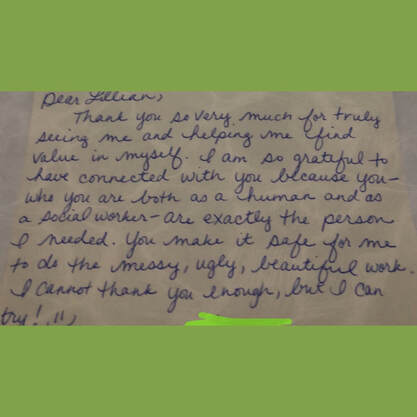 The pictures (the flowers dropped off by a client, a letter mailed by another) in this email might give you a hint of at least one thing that matters to me…….yes indeed…….Relationships. Not only relationships between me and the people in my life, but the relationship that they have WITH themselves, the relationship that YOU have with yourself. When we respect ourselves, we don’t “take” anything, we “create” everything. The flowers and the card are feedback, feedback to the very things that we choose to do, say and be in this world. Some of this might come naturally, unconsciously……but what if you took on, today, to CONSCIOUSLY look at what you are creating in HOW you are BEING in the world at this time. What have you done that works in the world of having what you want and need? What can you take on as practices or learning that can make a difference in the area of your life that matters to you, but feel powerless to make a difference? Connection plays a huge role in feeling like a being that has the power to make a difference. Who are you connecting to? How often? Are you initiating connection? Are you asking for what you want and need? Or do you assume that your request will be unreasonable, unseen, denied......etc. WHAT WE GIVE OUR ATTENTION!!!! Finally, what we give attention to becomes our reality. There is a lot to choose from in our global community.....if you want peace, tranquility, love, and impact......what are some of the things that you entertain that contribute to this lifestyle? And what are some that shake it up? What can you take your attention away from that might calm your inner and outer world? What can you take your attention to that lights you up, warms your heart, settles your mind.....reminds you that you (and your relationships) matter too? At 5 am this morning, i woke up to the sounds of birds chattering outside my window (and I've been saying for days that I need to secure my window so i don't have to wake up so early). But, in the midst of that lucid state.....I was present to and giving my attention to the people in my life that i love, that bring kindness, generosity and contribution to the world. I became present to how blessed i feel...and this occurred more like a feeling.....to be surrounded by such enormously powerful people that are making a difference in the world. This wasn't always the case for me, i assure you, but through my own work over the years, i get to wake up at 5 am, with a loud and uninvited guest outside my window, but with a warm feeling and a smile on my face. You are hugely powerful. Discover and revel in the magic of what you can create today.....and every day of your beautiful life. Whenever this message finds you, I hope you are well, safe and know that you are always taken care of. With love, IDENTIFY IT/WORK WITH IT/LEAVE IT Lists some of the common characteristics of a toxic relationship, shows you how you might work with it, and perhaps determine that it is not a workable relationship, and then leave it. To download the file, click on the "Download File" hyperlink below.
|
Archives
May 2020
Categories |
||||||||
|
Testimonials from Lillian's ClientsPause to read a specific testimonial by pressing the highlighted number underneath.
|
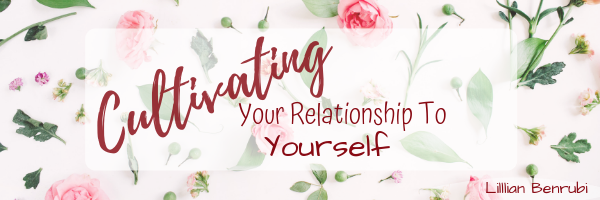




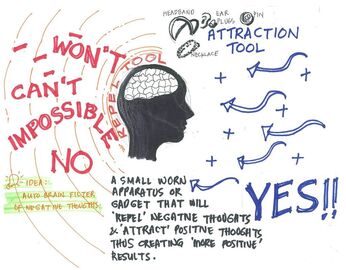
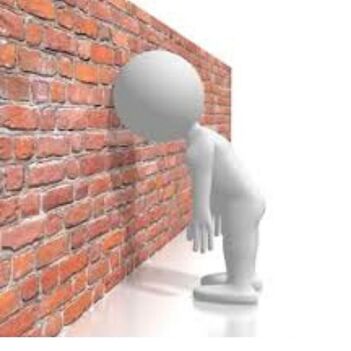



 RSS Feed
RSS Feed
